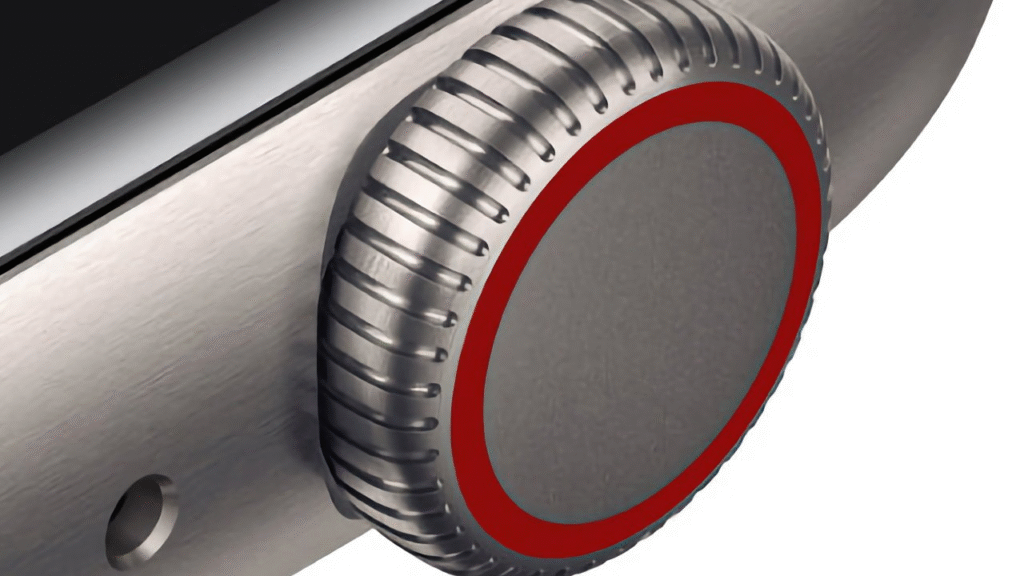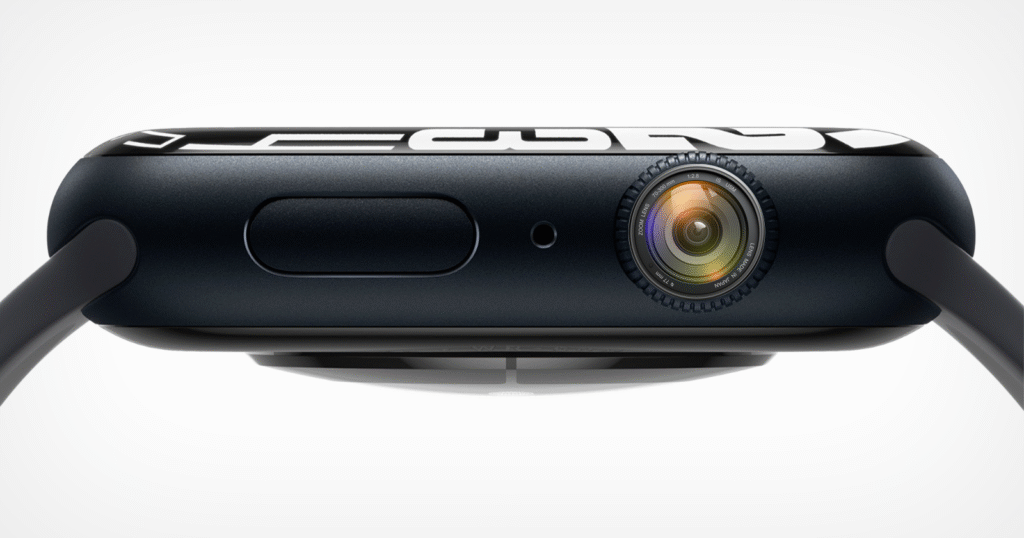Apple has filed a patent describing a new Digital Crown for the Apple Watch that senses finger motion and light instead of relying solely on mechanical rotation. The proposed crown would include an imaging surface and a light‑directing element to capture multiple image frames of a user’s finger. By comparing those frames, it can determine the direction and speed of finger movement without free rotation.

How the touch sensor works
The patent explains that the crown’s head would feature a window where light from a user’s skin enters through a light‑transmissive member. That light would reflect along an angled surface coated with reflective material toward an image‑sensing element inside the watch. The sensor would capture subtle textures or fingerprint features as the finger slides over the surface and analyze changes across frames to track motion.
Light detection and illumination
To ensure reliable sensing under different conditions, the watch could include its own light source near the crown’s base. This built‑in illumination would light the finger so the sensor can detect motion even in low ambient light. The design would also let the crown register finger movement through gloves or when using a stylus by recognizing any optically detectable feature.
Benefits over mechanical rotation
Optical sensing as a replacement of complete mechanical rotation might minimise mechanical wear on moving parts and shorten the shaft length. That would spare internal volume for a bigger battery or more sensors. Simultaneously, since this runs on a device that can provide even more accuracy through exact measurement of finger speed and the distance it travels instead of discrete detents, it might be more precise to use as a control mechanism.

The innovation Apple makes is building on the currently existing design of the Digital Crown, which has not been changed that much since its first iteration in the Apple Watch back in 2015. Using the addition of touch and light sensors, the company can open new gesture-based controls and enhance the interaction of users with apps and notifications on their wrists.
These patenting details indicate that the upcoming generations of the Apple Watch may become even friendlier to the natural way of entering information into them, leaving the classic design of the device as is. Should Apple adopt such a design, it might be the next evolution in the development of wearable controls as an elegant yet highly usable invention.



